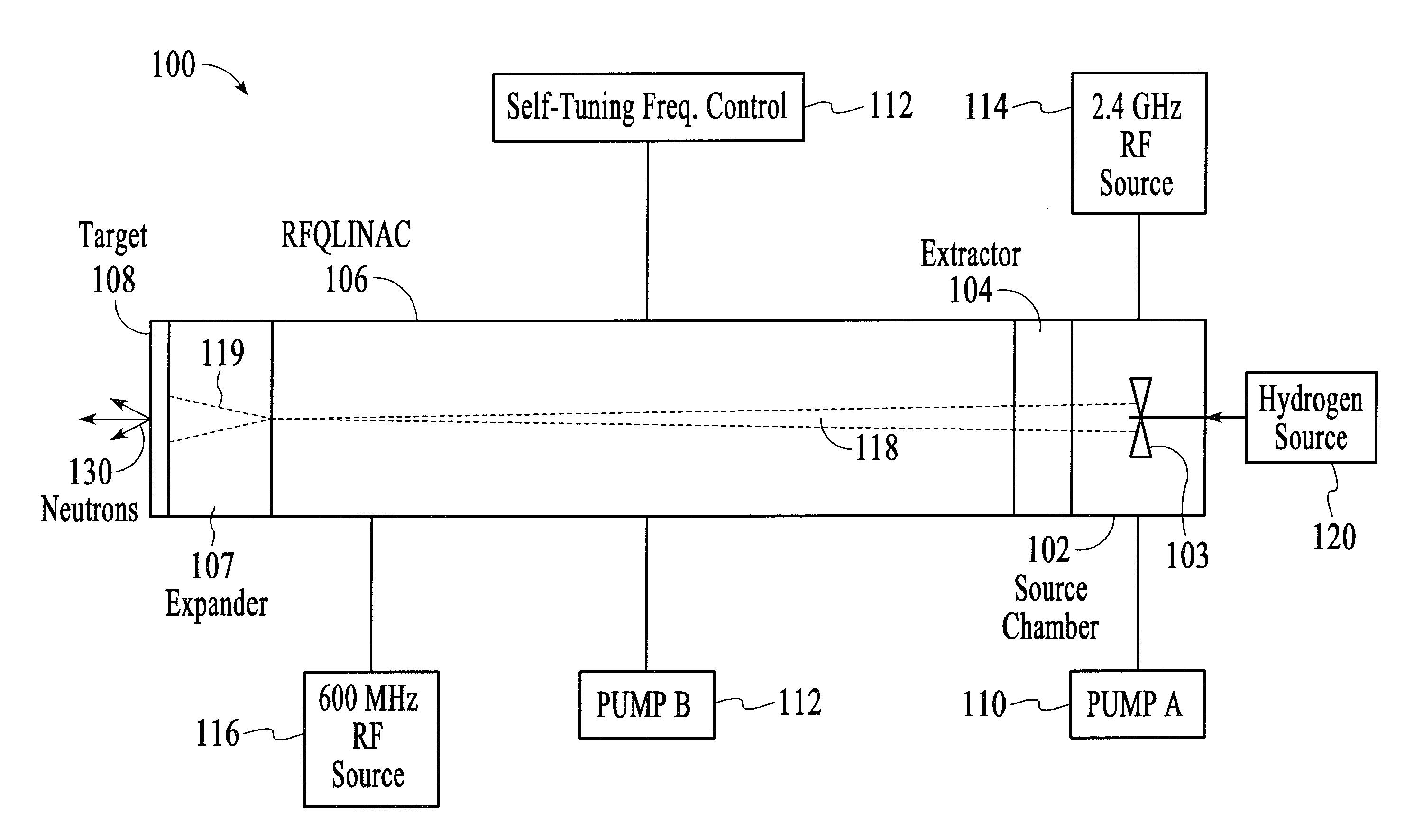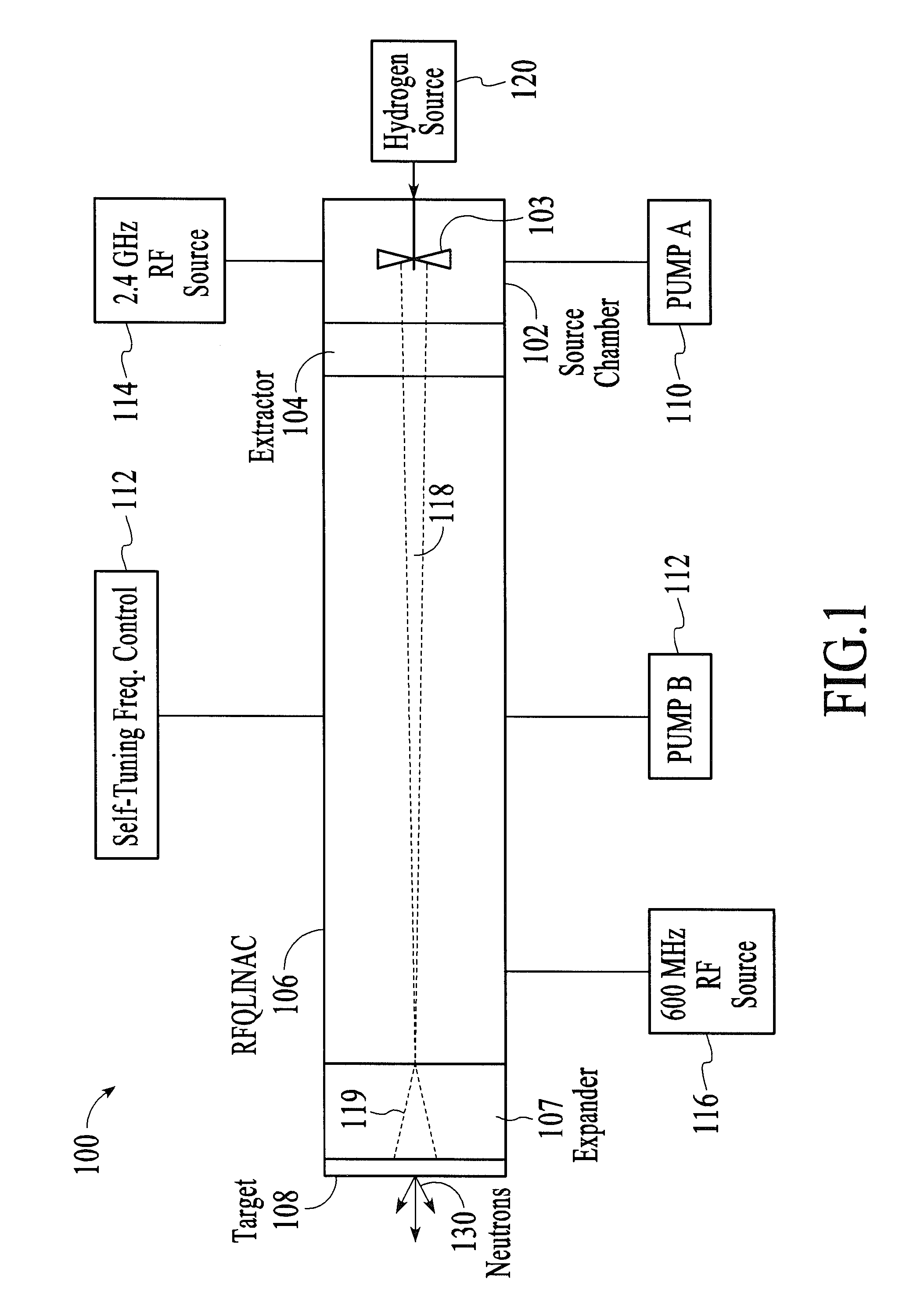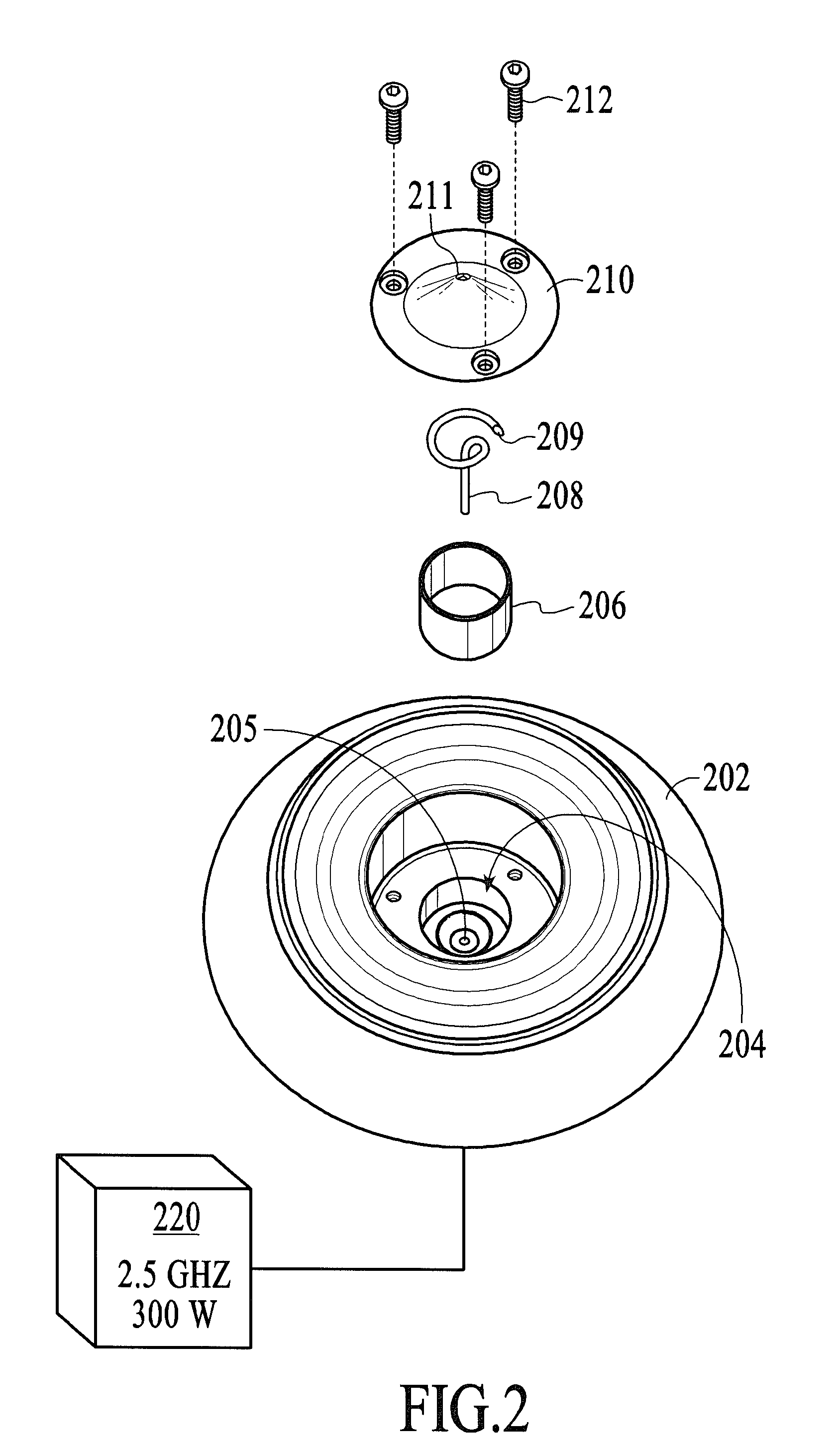Portable low energy neutron source for high sensitivity material characterization
a low energy neutron source and high sensitivity technology, applied in nuclear engineering, nuclear reactors, conversion outside reactors/accelerations, etc., can solve the problems of low energy neutrons that are difficult to generate, low energy neutrons that are extremely short lived and difficult to generate, and low energy neutron sources that are very large and expensiv
- Summary
- Abstract
- Description
- Claims
- Application Information
AI Technical Summary
Benefits of technology
Problems solved by technology
Method used
Image
Examples
Embodiment Construction
[0035]Embodiments of a portable, electrically generated, low energy neutron source that has been developed for in-field material characterization applications are described. Many areas of novelty have been assembled into this new approach to neutron sources. This new system makes use of low-voltage, pulsed-RF acceleration to obtain energetic particles useful in nuclear reactions that produce low energy neutrons.
[0036]The portable accelerator includes a portable radio-frequency linear accelerator based on the Radio Frequency Quadrupole structure (RFQ) designed to accelerate charged particles of hydrogen (i.e., protons) to energies useful for producing neutrons with the (p,n) reaction on lithium. This small accelerator uses low power vacuum pumps to effect a size and weight reduction for the system as compared to present neutron generators. The RFQ accelerator is designed with air-cooling fins integral to the one-piece vacuum system and accelerating cavity and the complete system is a...
PUM
 Login to View More
Login to View More Abstract
Description
Claims
Application Information
 Login to View More
Login to View More - R&D
- Intellectual Property
- Life Sciences
- Materials
- Tech Scout
- Unparalleled Data Quality
- Higher Quality Content
- 60% Fewer Hallucinations
Browse by: Latest US Patents, China's latest patents, Technical Efficacy Thesaurus, Application Domain, Technology Topic, Popular Technical Reports.
© 2025 PatSnap. All rights reserved.Legal|Privacy policy|Modern Slavery Act Transparency Statement|Sitemap|About US| Contact US: help@patsnap.com



